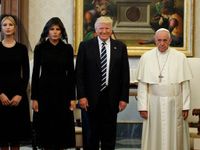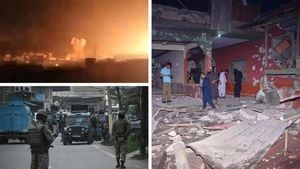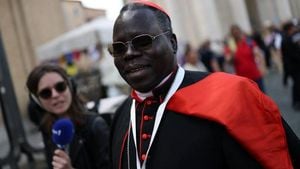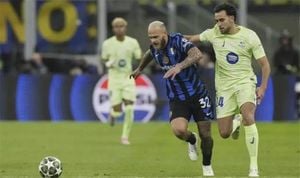The funeral for Pope Francis, the first pontiff from the Americas, took place in Saint Peter’s Square in Rome’s Vatican City on Saturday morning, April 26, 2025. This significant event drew an estimated 200,000 Catholics from around the globe, alongside numerous world leaders and dignitaries, to honor the late pontiff, who passed away on Easter Monday, April 21, 2025, at the age of 88.
World leaders began arriving in Rome on Friday, April 25, 2025, ahead of the weekend burial, which, while more subdued than usual, was still poised to be a historic occasion. Pope Francis, who died from heart failure following a stroke, was known for his humility and compassion, particularly towards marginalized communities. His burial rites, though simpler than those typically associated with a pope, still featured a significant political gathering.
The funeral ceremony commenced at 10 AM CET (08:00 GMT) at St Peter’s Square, as the late pope had requested a modest funeral service. In accordance with his wishes, his body was placed in a simple wooden coffin and will be buried in an unmarked tomb at Santa Maria Maggiore church, a site he favored during his lifetime.
Among the notable attendees were U.S. President Donald Trump and First Lady Melania Trump, who expressed their condolences, stating that Pope Francis was a “very good man” who “loved the world.” Despite their previous disagreements—most notably over Trump’s immigration policies and the U.S.-Mexico border wall—Trump ordered flags to be flown at half-mast in honor of the pope.
UK Prime Minister Keir Starmer also attended, expressing his sadness at the pope’s passing. “His leadership in a complex and challenging time for the world and the church was often courageous, yet always came from a place of deep humility,” he stated. Representing the royal family was Prince William, whose father, King Charles, noted that Pope Francis would be remembered for his compassion and care for both people and the planet.
Ukrainian President Volodymyr Zelenskyy and First Lady Olena Zelenska were present, having had a complicated relationship with the pope, especially regarding the ongoing war in Ukraine. The pope had previously called for peace in Ukraine and had met with Zelenskyy multiple times. However, their relationship was strained after the pope suggested that Ukraine should negotiate with Russia, a comment that was met with strong criticism from Ukrainian officials.
Brazilian President Luiz Inacio Lula da Silva also paid his respects, declaring a seven-day mourning period in honor of the pope. Lula remarked, “We were able to share our ideals of peace, equality, and justice – ideals that the world has always needed, and will always need.” Similarly, Philippine President Ferdinand Marcos Jr. described the late pope as a leader who “led not only with wisdom but a heart open to all.”
Italy’s Prime Minister Giorgia Meloni and President Sergio Mattarella attended, with Meloni having met the pope several times in the past. Notably, Argentina’s President Javier Milei, who has had a contentious relationship with the pope due to their differing political views, was also in attendance. Milei had previously referred to Pope Francis as a “leftist,” highlighting the stark contrast between their ideologies.
The funeral service featured a roll call of 170 foreign dignitaries, including heads of state from across the globe. Among those present were UN Secretary-General Antonio Guterres, French President Emmanuel Macron, and German Chancellor Olaf Scholz. The diverse gathering underscored the pope’s global influence and the respect he garnered from leaders of various political backgrounds.
While many leaders gathered to pay their respects, notable absences included Russian President Vladimir Putin and Israeli Prime Minister Benjamin Netanyahu, both of whom are facing international arrest warrants on allegations of war crimes. Their absence was particularly significant given the geopolitical tensions surrounding their leadership.
As the funeral unfolded, some diplomatic awkwardness was anticipated. President Trump and President Zelenskyy were set to meet in person for the first time since their tense encounter at the White House in February. During that meeting, Trump had criticized Zelenskyy for not negotiating with Russia, which added to the already strained relations between the two countries. The seating arrangement, organized alphabetically, at least ensured that the two leaders would not be seated next to each other, potentially easing some tension.
Furthermore, there were expectations of friction between Trump and Macron, given the French president’s criticisms of Trump’s trade policies. The gathering thus represented not only a moment of mourning but also a complex interplay of international relations, showcasing the delicate balance of diplomacy amidst shared grief.
Pope Francis’s funeral marks a pivotal moment for the Catholic Church and the global community. His passing signifies a profound shift, and the process of selecting a new papal leader is anticipated to be elaborate, reflecting the pope’s lasting impact on the Church and its followers. As the world continues to grapple with the legacy of Pope Francis, the gathering of leaders and dignitaries serves as a testament to his far-reaching influence and the respect he commanded across various spheres of life.
The ceremony concluded with heartfelt tributes from attendees, as they reflected on the pope’s life and contributions. The simplicity of his burial, in line with his wishes, stands as a poignant reminder of his humility and dedication to the teachings of compassion and love.




